#domestic wildlife
Text
A study that just came out demonstrates that outdoor cats are known to prey on over two thousands species of wild animal, from mammals to birds to insects. That includes 347 species that are endangered, threatened or otherwise of concern, and they've been a key factor of the permanent extinction of over 60 species. And while cats may not always bring home what they catch, chances are if your cat is allowed to roam unsupervised outside, they're killing your local wildlife.
Why is this so important? Worldwide, wild animal populations have decreased in number by 69% in the past fifty years; that means that in my lifetime (born in 1978), the sheer number of wild animals in the world has been decreased by over half. Even "common" wild species are less numerous than before. While habitat population is the single biggest cause of species endangerment and extinction overall, outdoor and indoor/outdoor cats are a significant cause as well. In fact, they are the single biggest cause of human-caused mortality in wild birds.
Most importantly, it's very, very simple to fix this problem: keep your cats indoors, and spay and neuter them. If your cat is bored, they need more enrichment, and there are plenty of ways to make your home more exciting for them, from bringing home cardboard boxes for them to explore, to playing with them more often. If you want your cat to get some outdoor enrichment, leash train them (yes, it can be done!) If you have the space and resources, build them a catio where they can be safe from outdoor dangers like predators and cars, while also keeping local wildlife safe from them.
If you just give into their whining and pawing at the door, then they know that that's what they have to do to get their way; I know it's a tough transition, but it's worth it in the end for everyone involved. Cats are domesticated, which means they are not native anywhere in the world; there are exactly zero ecosystems in which they belong, save for the safety of your home. It is your responsibility to give them an enriching environment without taking the shortcut of letting them go wreak havoc outside.
#cats#outdoor cats#feral cats#nature#wildlife#animals#ecology#environment#conservation#science#scicomm#birds#endangered species#extinction#domesticated animals#domestication#biology#animal behavior#animal welfare
8K notes
·
View notes
Text

don't be an asshole
#go to your community's fireworks display#don't use fireworks in your neighborhood#traumatizing domestic animals#traumatizing the wildlife#traumatizing service members with PTSD#don't be an asshole
428 notes
·
View notes
Text




Domestic Cat Felis catus
2/16/2023 Disney's California Adventure Park, California
One of the more well-known Disney cats, because she can frequently be seen hanging out near Grizzly River Run and being admired by parkgoers. Her name is Francisco! The Disneyland Resort actively encourages these feral cats to hang around, as they help with rodent control, but will remove any that become aggressive towards people.
#hazards of taking pictures at disney parks: while I was taking these either chip or dale came up behind me and scared the crap out of me#cat#cats#mostlycatsmostly#domestic cats#feral cat#feral cats#also: I am a HUGE advocate for keeping your cats indoor-only or outdoor under control (leash)#I don't love that disney encourages feral cats BUT they do TNR them afaik and there's not a crazy number of them#I feel like it's relatively rare to see them nowadays?? when I was a kid I saw at least one or two per visit#regardless. big disclaimer bc I am primarily a bird/wildlife blog#I do not approve of outdoor cats lmao#my photos#disneyland#disney parks
193 notes
·
View notes
Text
When you’re out for a walk and a freakin horse comes out of no where, at least I made a friend though.

#not my horse#is it wild? is it owned I have no idea#all I know it stole and ate my apple so yeah#aesthetic#nature photography#nature aesthetic#my photography#naturecore#horse#photography#auggie posts#my photo#exploring#explore#wanderlust#horsecore#goblincore#cottagecore#cottageblr#cottagecore aesthetic#walking in nature#walking#newfoundland and labrador#Newfie#Newfoundlander#wildlife#wild horse#domestic horse#animalblr#farmcore
25 notes
·
View notes
Text
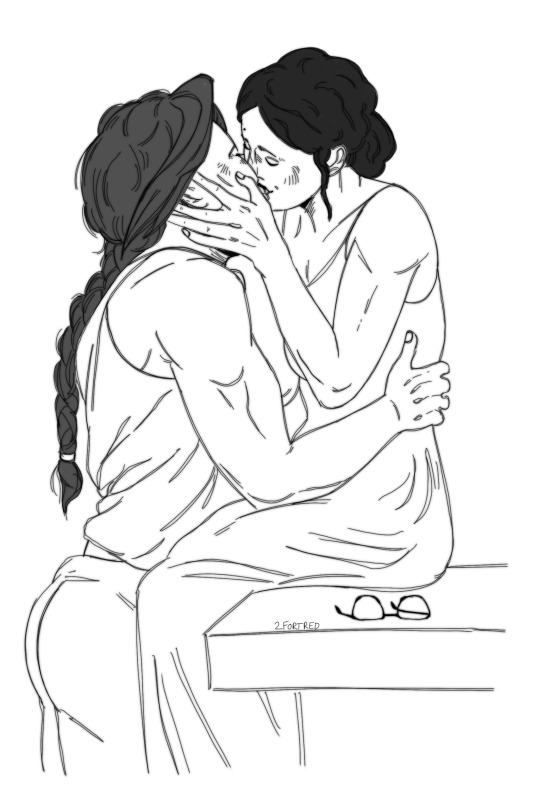
smoochie
#they should have their own house and be domestic and occasionally they murder people and wrestle wildlife#tf2#team fortress 2#tf2 art#team fortress 2 art#tf2 fanart#tf2 miss pauling#team fortress 2 miss pauling#tf2 zhanna#team fortress 2 zhanna#tf2 zhannapauling#my art
63 notes
·
View notes
Text

an aurochs cow drawing from forever ago, one of my favorite drawings so far on procreate.
#paleoart#paleo art#aurochs#cow#cattle#pleistocene#procreate#bos primigenius#bovids#bovines#eurasian wildlife#extinct#domestication
24 notes
·
View notes
Text









dove affection 🕊️🤎
#doves#mourning dove#collared dove#homing pigeon#domestic pigeon#brown#grey#uploads#cottagecore#aesthetic#naturecore#ornithology#birds arent real#wildlife
21 notes
·
View notes
Text
Friendly reminder from a wildlife rehabilitation student here, as we approach baby season in many regions-
Leave baby animal care to the professionals! If you find a baby animal, be it bird or bunny, call your local wildlife rehabilitation center for advice on what to do, as it’s highly situational and depends on species. The fact stands regardless of circumstance- you aren’t equipped to care for it! Leave it to the professionals! Otherwise, as sad as it is to say, you could be condemning that baby animal to death!
#i have already heard stories of baby squirrels getting kidnapped to be raised by animal lovers this baby season so I wanted to put this here#i assure you it is not as simple as buying some random domestic animal formula and trying to feed it yourself- in fact if you have to#transport that baby animal to a rehabilitator- please don’t feed it at all!! that could be extremely dangerous#respect wildlife from a distance and appreciate their presence but don’t put them (or yourself) at risk!
24 notes
·
View notes
Text
I yearn for an au where Lyle and Querl are in their late twenties-early thirties and they are both university professors (Chemistry and Physics respectively). They went to college together and are now married, but no one, either staff or students, realize they are married because they act like enemies.
#lyle is an artist outside of work too#because i want him to be#and he does murals around the campus and the city on off days#Querl volunteers at a wildlife reserve (hello koko)#sigh domestic brainylyle where are you#save me domestic brainylyle#Lyle never wears his ring at work since he works with chemicals and everyone just assumed brainy had a spouse they never met#this can take place 21st or 30th century both works#some of the losh are students some of them are staff#brainylyle#querllyle#lyle norg#querl dox#invisible kid#brainiac 5#losh#legion of super heroes#i have too many wips or i would write this#they are a very much the kind of couple to get married on a whim and not want a big wedding#they hated the idea of a big wedding#the only people who were at their wedding was Jacques Dani Luornu Brande and Gates#and they just...kinda assumed everyone else knew somehow or another
37 notes
·
View notes
Text
Wild vs. Feral, Domesticated vs. Tame, Native vs. Invasive, and Why Words Matter
Originally posted on my website at https://rebeccalexa.com/wild-vs-feral/
Recently a post crossed my dash on Facebook featuring a small group of llamas in the forests of the Olympic Peninsula. The caption described them as “wild” llamas (Lama glama). That may seem pretty innocuous to the average person, but to a naturalist it’s a gross mischaracterization. For one thing, llamas are completely domestic animals, no more wild than a cow or dog; they are descended from the guanaco (Lama guanacoe), which is a truly wild camelid. So this means that the llamas on the peninsula are feral, not wild. But why does the distinction of wild vs. feral matter so much?
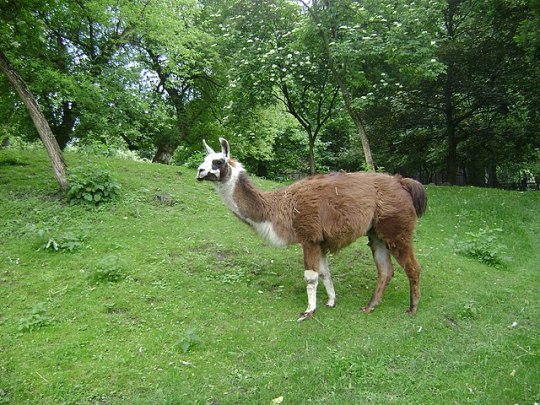
The terms we use to describe various species help us to understand their origin and, perhaps more importantly, their current ecological status. These concepts aren’t just relevant to scientists, however. Everyday people are constantly making decisions that can affect the ecosystems around them, and often these decisions are made without having a full understanding of their impact.
For example, look at how many people release unwanted pets into the wild, whether domesticated rabbits, goldfish, snakes, or other, more exotic animals. Some of these unfortunate animals end up dying pretty awful deaths due to starvation, exposure, or predation. But others manage to survive and reproduce, becoming the latest population of non-native–and potentially invasive–species in their ecosystem. This wouldn’t happen if more people understood the impact of non-native species, and how releasing captive animals puts native species at risk.
But it all starts with knowing that there’s a difference, and understanding the terms that explain why that difference exists. So let’s explore some vocabulary that can be used to describe species, whether animal, plant, or otherwise.
Let’s start with domestication, because there often seems to be confusion as to what makes a species domesticated. Domestication is a process that takes many years, often measured in centuries. Humans breed chosen animals for particular traits over a number of generations. As time passes, each subsequent generation becomes more different from the wild species it originated from, and eventually a new, fully domesticated species emerges from this process of artificial selection by humans.
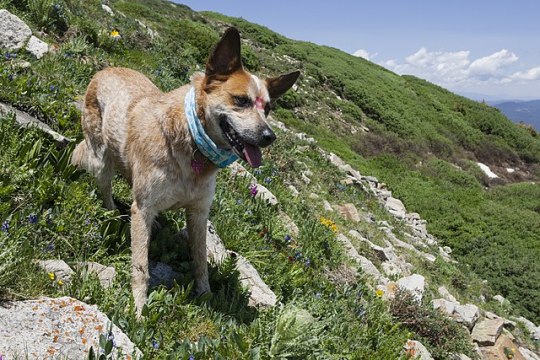
Dogs (Canis familiaris or Canis lupus familiaris) are the first animal humans domesticated in a process that started about 30,000 years ago. They evolved from the now-extinct Pleistocene wolf, a particular lineage of the gray wolf (Canis lupus), and it’s likely that the partnership began as some wolves showed less fear of humans while scavenging from our kills. By 14,000 years ago dogs were a distinct species (or subspecies) from wolves.
Dogs display very different characteristics from wolves. Their faces tend to be shorter with a more pronounced stop (the bump in the forehead where the muzzle meets the rest of the skull.) Floppy ears and curled tails are common, as are patchy-colored coats. Dogs tend to have weaker muscles than wolves of a similar size, shorter legs and smaller feet, smaller teeth, and a smaller size overall. This is a phenomenon known as neoteny, in which domesticated animals have a tendency to retain more juvenile physical traits of their parent wild species, and you can see it in domesticated animals across the board.
But it’s not just physical appearances that matter. Behaviorally dogs are generally more friendly toward humans; in fact, they’ve even developed some human-friendly body language that wolves don’t have, like “puppy dog eyes.” They can be easily trained and, unless poorly socialized, dogs generally enjoy the company of humans.
In many ways, physically and behaviorally, a dog is a wolf that never grew out of its puppy stage. While a young wolf pup may be able to live in someone’s house for a short time, as they grow older they become more destructive and less tolerant of human company. Your dog may love watching out the window during a car ride, but a wolf is going to be much more stressed out by the experience. Even wolf-dog hybrids have to be treated differently than your average domesticated dog because the wolf content has a significant effect on behavior.
This is just one example of how domestication isn’t just a matter of a few generations of selective breeding. You can also compare domesticated horses (Equus ferus caballus) with Przewalski’s horses (Equus ferus przewalskii or Equus przewalskii) or zebras (subgenus Hippotigris), domesticated cows (Bos taurus) with stories of fierce wild aurochs (Bos primigenius), and so forth. In every case the wild and domesticated counterparts are very different in both appearance and behavior.
Now, what about the term “tame”? Many wild animal species have been tamed over the years, either wild-caught individuals or those born in captivity. These tame animals may be more docile in comparison to their fully wild counterparts, but this generally takes a lot of handling and socialization from a young age. Moreover, tame animals retain a lot more wild behaviors than domesticated ones.

Take those supposed “domesticated” foxes that people want to have as pets. Most of the foxes available as pets have no relation to those in the famous Russian fox domestication experiment, but are from modern fur farm lines. And in fact the study foxes came from Russian fur farms, so the researchers were beginning with pre-tamed animals rather than truly wild ones. While some tame foxes may be more amenable to human handling than wild foxes, they are by no means domesticated. They are more prone to wild behaviors like urinating everywhere to mark territory, chewing on anything they can get their jaws on, nipping, and making a LOT of noise. Moreover, whereas dogs adapted to eating an omnivorous diet after millennia of eating alongside us, foxes need a more specialized diet than what you can get at a pet store.
Unfortunately there are unscrupulous people within the exotic pet trade who will advertise their tame (at best) stock as “domesticated.” This often leads consumers to thinking that they’re getting a much more tractable animal that will be as easy to care for as a cat or dog, and sets up everyone involved for disaster (except, of course, the seller with a fatter wallet.)
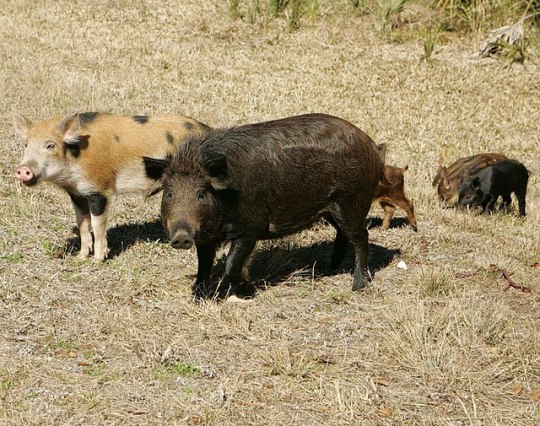
Next, let's compare wild vs. feral. A wild species is one that has never been domesticated, nor have its ancestors. Generally it will be a native species to its ecosystem, though non-native species can also be introduced to an ecosystem without ever having been domesticated. A feral animal, on the other hand, is a member of a domesticated species that has escaped or been released back into the wild and has survived to reproduce new generations that have never been handled by humans.
I’ve often heard people refer to the feral swine (Sus domesticus) that have ravaged ecosystems worldwide as “wild pigs”. They may behave in a wild manner, and they certainly look rougher and hairier than your average well-fed domesticated pig on a farm. It’s not uncommon for feral animals to regain some traits of their wild ancestors. However, that does not make them truly wild.
If you manage to wrest away a litter of newborn piglets from a feral sow and bottle-feed them, they are likely to be able to be socialized and kept in captivity, though they may still physically resemble feral pigs. They haven’t lost the deeply-ingrained genes that carry domesticated traits. However, if you try to raise a newborn Eurasian wild boar (Sus scrofa) or red river hog (Potamochoerus porcus), it will lack the domesticated traits of its farm cousins and show more wild traits as it ages, making it a rather unsuitable pet or farm animal. We also see this return to domestic traits in mustangs and other feral horses captured at a young age. While a mustang born in the wild may be tougher to work with at first than a foal born in captivity and handled from birth, the mustang will be much more calm and easier to train than, say, a zebra.
The problem with referring to feral animals as “wild” is that this suggests they are a natural part of the ecosystem they are in. Because a truly domesticated species (or subspecies) is not the same as the parent species, it has no place to which it is native as a wild animal.

A native species is one that has evolved in a given ecosystem for thousands or even millions of years. In the process it has developed numerous intricate interrelationships with many other species in that ecosystem, creating a careful system of checks and balances. A non-native species is any species that has been taken out of the ecosystem in which it evolved and placed in a different ecosystem where it is not normally found.
For example, here in North America the mourning dove (Zenaida macroura) is a wild native species. While it may resemble domesticated pigeons, it has never been domesticated even when kept in captivity. The Eurasian collared dove (Streptopelia decaocto), on the other hand, was introduced to the Americas after a few dozen individuals were released in the Bahamas in 1974. The feral pigeon (Columba livia domestica) is a domesticated species derived from the rock dove (Columba livia), which is native to Europe, west Asia, and northern Africa. Both the collared dove and pigeon are examples of non-native species. Most non-native species do not offer any benefits to the ecosystems they are introduced to because they do not have established relationships with native species. When they compete with native species for resources, they weaken the ecosystem overall.
Non-native species can be further categorized as naturalized or invasive, or even both. A naturalized species is a non-native one that has managed to establish reproducing populations, rather than going extinct without becoming established. Unfortunately, some people take this to mean that the species has become fully integrated into the new ecosystem. However, this is a process that again takes thousands to millions of years as other species adapt to the newcomer, which itself often also changes as it adapts to its new environment.
Ring-necked pheasants (Phasianus colchicus) are an example of a naturalized species in North America. Native to Asia and parts of Europe, they were introduced here as a game bird 250 years ago. While captive pheasants are regularly released into the wild to offer more hunting opportunities to humans, this species has likely been naturalized from its first introduction.
Again, “naturalized” doesn’t mean “natural”. Pheasants compete with native birds like northern bobwhite (Colinus virginianus) and prairie chickens (Tympanuchus spp.) Not only do they compete for food, nesting sites, and other resources, but they also spread diseases to native birds. Pheasants even engage in brood parasitism, laying their eggs in native birds’ nests and sometimes causing the native birds to abandon the nest and their own young entirely.
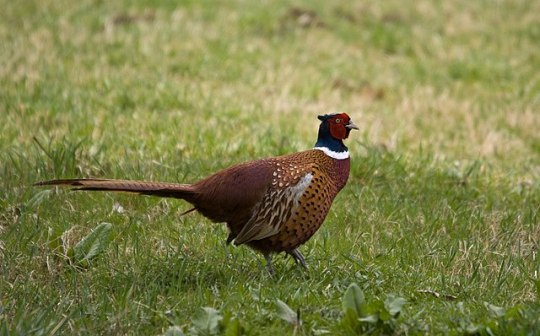
This means that the pheasants are also invasive as well as naturalized. Invasive species are non-natives that aggressively compete with, and sometimes displace or extirpate, native species. There are several hundred species that have become seriously invasive here, including both vertebrate and invertebrate animals, and numerous plants. But even the rest of the over 6000 non-native species that have become naturalized here still put pressure on native species, and have the potential to become invasive if their impact increases to a more damaging point.
Hopefully this gives you a clearer understanding of what these terms mean and why it’s important to know the difference. By knowing a little more about how your local ecosystem works and how different species may be contributing to or detracting from its overall health, you have more power to be able to make decisions that can preserve native species and help ecosystems be more resilient. Given that the removal of invasive species is one of the most important ways we can help ecosystems thrive in spite of climate change, it’s more important than ever that we increase nature literacy among the general populace. Consider this article just one small way to move that effort along.
Did you enjoy this post? Consider taking one of my online foraging and natural history classes or hiring me for a guided nature tour, checking out my other articles, or picking up a paperback or ebook I’ve written! You can even buy me a coffee here!
#wildlife#animals#nature#biology#science#scicomm#invasive species#wild animals#domesticated fox#feral hogs#long post#vocabulary#ecology#educational#biodiversity#conservation#environment#environmentalism#climate change#pigeons
2K notes
·
View notes
Text

Inquisitive Cattle
The conservation cattle came to say hi, a small herd that graze the meadows at Titchmarsh nature reserve to aid with their conservation.
#animal#animals#canon#canonuk#cattle#cows#domestic cattle#fauna#nature#nature reserve#northamptonshire#outdoors#spring#titchmarsh#wildlife#wildlife trust#wildlife trusts
14 notes
·
View notes
Text

Domestic Mallard Anas platyrhynchos domesticus
4/23/2023 Los Angeles County, California
#so many beautiful domestic mallards out there just dumped at city parks :(((#mallard#domestic mallard#mallards#duck#ducks#pet duck#domestic duck#bird#birds#bird photography#birblr#wildlife#wildlife photos#wildlife photography#nature#nature photos#nature photography#birding#birdwatching#birding photos#my photos#california#california wildlife
35 notes
·
View notes
Text
Even though they’re raised on fur farms, ranched foxes still fall under wildlife import & export restrictions because they’re not domesticated.
#same with mink and tanuki and such#adding to the whole are they tamed or domesticated thing#legally they're counted as wildlife#in the US anyway#jackal's journal
116 notes
·
View notes
Text



Alpaca .ʕʘ‿ʘʔ. Huacaya Alpacca
#Alpaca#Huacaya Alpaca#Lama Pacos#Llama#Wildlife#Zoo#Farmyard#Cute Animals#Sunlight#Domestic Animals#Queens Zoo#Flushing Meadows#Corona Park#Queens#New York City#New York
9 notes
·
View notes
Text

Domestic Mallard Hybrid (Anas platyrhynchos x)
Taken at South Patrick Community Park in Satellite Beach, FL
#domestic mallard#mallard#mallard duck#mallard hybrid#hybrid duck#duck#ducks#duck photography#bird#birds#bird photography#water bird#water birds#animal#animals#animal photography#nature#nature photography#wildlife#wildlife photography#photography#florida#florida photographer#florida photography#community park#nikon camera#nikon photography#nikon d3500#Anas platyrhynchos
13 notes
·
View notes
Text
people suggesting paving my road is enough to like...bring me to an actual anger response. no. we are not doing that.
#not dogs#not only are dirt roads better for the environment and prevent the overheating happening in asphalt jungles#but they're cheaper to maintain and quicker to fix#dog paws are not at risk walking on dirt roads and no salt is used in snowy months instead we use sand#so again. no harm to wildlife or domestic animals#sorry some lady on a public forum suggested paving our road in response to...kids that throw twisted teas out of their vehicles#did you know: paving a road is not going to stop people from littering but it will probably:#increase speeds and make it unpleasant to walk on or bike on and increase littering#bc drivers will not see the community using the road as it becomes a rural speedway#i will fight tooth and nail to keep my dirt road lmao#if you want it paved you should've bought on a paved road that's all i'm saying
39 notes
·
View notes